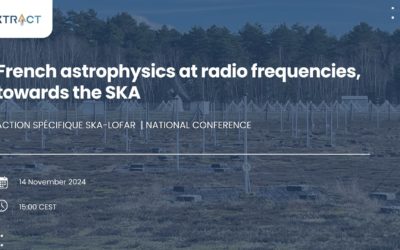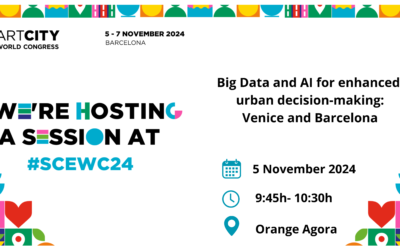Delivering a data-driven open-source platform integrating cloud, edge and HPC technologies for trustworthy, accurate, fair and green data mining workflows for high-quality actionable knowledge
Objectives
Enable the development of complex and secure data mining workflows
Develop novel data-driven orchestration mechanisms to efficiently deploy and execute data mining workflows
Deliver the EXTRACT software platform and demonstrate its benefits in two use cases
Fully exploit the performance capabilities of the compute continuum to effectively address extreme data characteristics (high volume, variety, velocity, veracity) holistically
Foster the adoption of EXTRACT technology by industrial and academic communitie
Use cases
Personalized Evacuation Routing (PER) System
A Personalized Evacuation Routing (PER) System will serve to guide citizens in an urban environment (the city of Venice) through a safe route in real time.
The EXTRACT platform will be used to develop, deploy and execute a data-mining workflow to generate personalized evacuation routes for each citizen, displayed in a mobile phone app, by processing and analysing extreme data composed of Copernicus and Galileo satellite data, IoT sensors installed across the city, 5G mobile signal, and a semantic data lake fusing all this information.
Transient Astrophysics with a Square Kilometer Array Pathfinder (TASKA)
The Transient Astrophysics with a Square Kilometer Array Pathfinder (TASKA) case will use EXTRACT technology to develop data mining workflows that effectively reduce the huge amount of raw data produced by NenuFAR radio-telescopes by a factor of 100. This will allow the populating of high-quality datasets that will be openly accessible to the astronomy community (through the EOSC portal) to be leveraged for multiple research activities.
TASKA use case presented at key astronomy events
The EXTRACT project is leveraging cutting-edge data processing technology across the compute continuum (edge, cloud and HPC) that is being tested in...
Strengthening EXTRACT project success through external expertise and collaboration
As the EXTRACT project enters its final year, it is strengthened by a new collaboration with Ekinox, a French company specialized in creating...
Toward “Cybersecurity blueprints” that address modern security challenges
Given the heavily-digitization and numerous and diverse cyber-attacks that occur daily as part of our modern society, cybersecurity is increasingly...
HiPEAC 2025 WS: Advancing the compute continuum
EXTRACT Collaborates with BSC and URV coordinated projects in workshop to Showcase innovations in the Compute Continuum The emerging paradigm of...
French astrophysics at radio frequencies, towards the SKA
The Action Spécifique SKA-LOFAR is hosting a national conference on radio astronomy from November 12 to 15, 2024, at the École Normale Supérieure in...
EXTRACT @SCEWC ’24: Big Data & AI for urban decision-making
The EXTRACT project will play an active role in the 2024 Smart City Expo World Congress, the biggest and most influential event for cities and...






